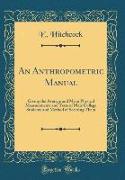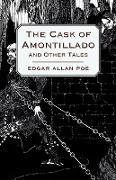An Anthropometric Manual
BücherAngebote / Angebote:
Excerpt from An Anthropometric Manual: Giving the Average and Mean Physical Measurements and Tests of Male College Students and Method of Securing ThemIf we are to devote our attention, before all things, to what can be measured or weighed. The living man is the first object which demands our investigation. Carl Vogt.The study of Anthropometry, or the proportions of the human body, is not modern, but reaches back to the remote civilization of India, when we find a treatise called Silpi Sastri, which investi gated the outline of the body by dividing it into 480 parts.In later times the Greeks proposed a Canon or model in the shape of a statue called Doryphoros, which was claimed to be the pattern for the human figure.Still later the mathematical law was applied to the human body, an entirely artificial system hence we obtain the terms cubit, hand-breadth, ell and so on.An Italian sculptor, Alberti, proposed a module of one foot in height, which was divided into ten degrees and minutes, as a standard for the proportions of the human body.In 1854 a German, Carus, proposed an anatomical basis for determining human bodily proportions, assuming the hand length for the unit, and the adult vertebral column of 24 free vertebrae, to be the key to these proportions.But the father of Anthropometry is Baron Quetelet of Belgium, who, in the middle part of the present century, offered the actual measurements of the body and the means and averages deduced from them as the true and scientific way of ascertaining human proportions, adopting the Baconian method of reasoning from the effect to the cause, from the concrete to the abstract.Of course in the Divine mind there is the ideal or plan not only of the great groups of animals but of man also. And this idea is not given to us as complete and clear as the human architect furnishes the plans and specifications of the house he will build. We are left to study and work out what this plan may be. There is thus furnished to us the joy and stimulus of new discovery, and the impulse of advanced knowledge.About the PublisherForgotten Books publishes hundreds of thousands of rare and classic books. Find more at www.forgottenbooks.comThis book is a reproduction of an important historical work. Forgotten Books uses state-of-the-art technology to digitally reconstruct the work, preserving the original format whilst repairing imperfections present in the aged copy. In rare cases, an imperfection in the original, such as a blemish or missing page, may be replicated in our edition. We do, however, repair the vast majority of imperfections successfully, any imperfections that remain are intentionally left to preserve the state of such historical works.
Folgt in ca. 10 Arbeitstagen

